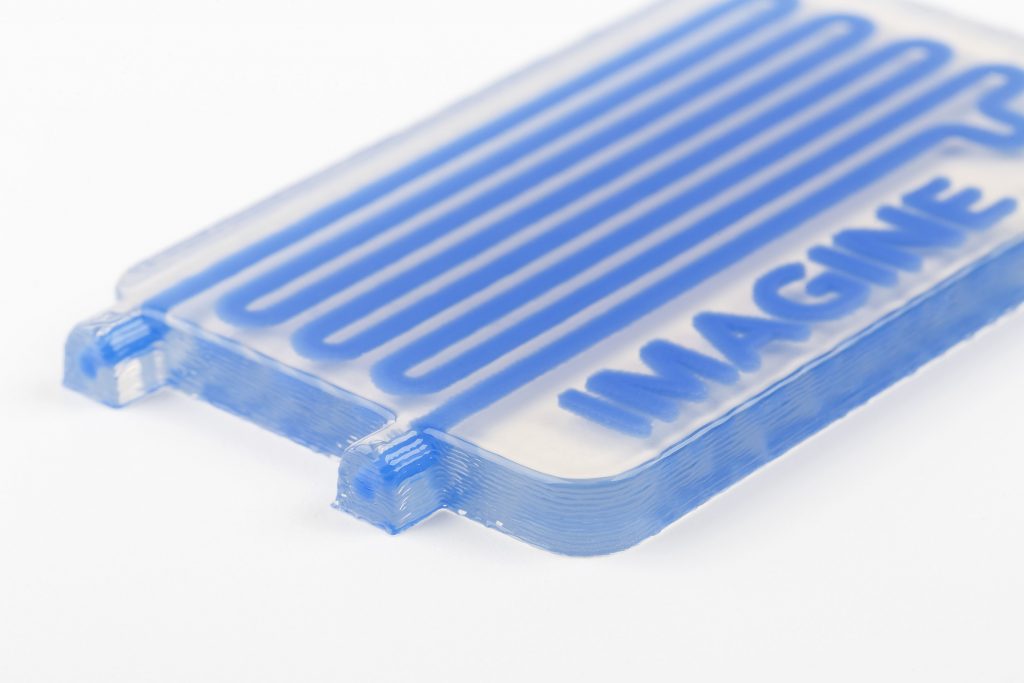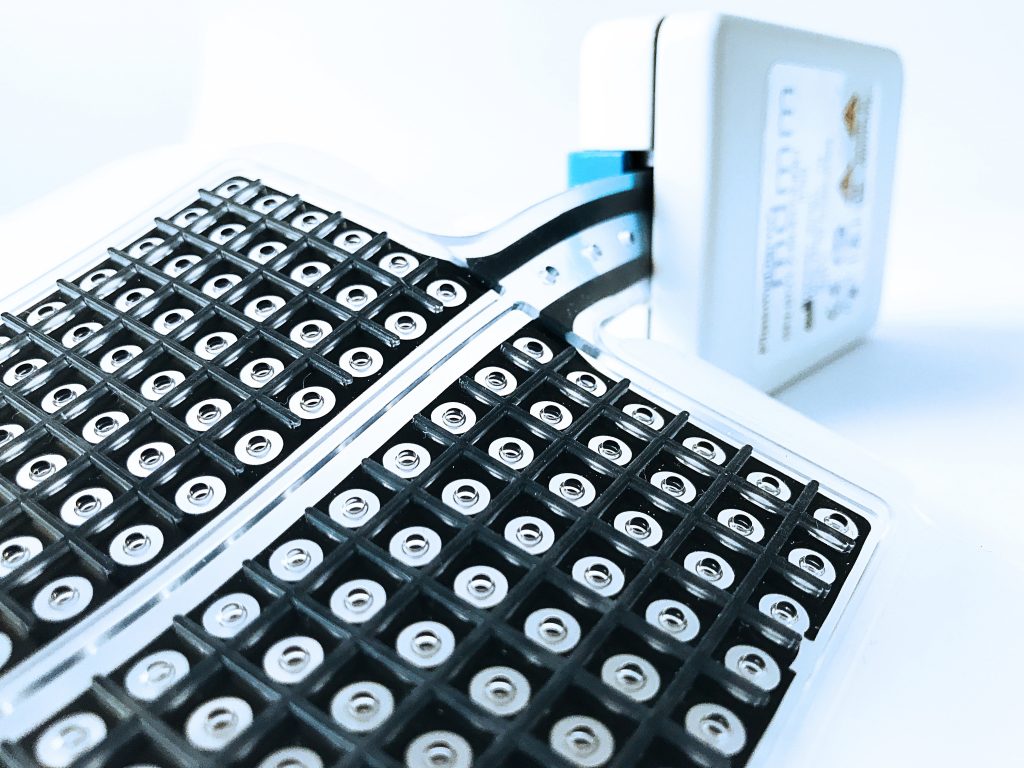WACKER‘s silicone brand, ACEO, was developed in 2016, at the same time that the company announced that it had created the first-ever industrial 3D printer for silicones. ACEO is going to deploy the printer for its 3D printing silicone service. Since then, ACEO has been steadily progressing in its development of silicone 3D printing materials, introducing multi-material silicone 3D printing and it will be opening a silicone 3D printing lab in the United States in 2019. Now ACEO has announced a new innovation: electrically conductive silicone elastomers.
Silicones are used in many applications that require electrical conductivity, such as actuators, sensors, generators, heating elements and advanced applications like cold plasma or printed electronics. 3D printing allows for integrated functionalities to be created in only one step, as well as for the creation of complex structures that cannot be realized with other production technologies.
“3D printing with the new electrically conductive ACEO® Silicone enables new-to-the-world applications that could not be implemented until now, especially in modern medical or functional automotive parts,” said Bernd Pachaly, head of the ACEO 3D printing project at WACKER. “We added this new silicone option to our portfolio specifically to address unmet needs and to go beyond conventional solutions.”
The new electrically conductive silicone rubber can handle applications that require temperature resistance of up to 200ºC and offers unchanged conductivity up to 25 percent elongation.
“We are delighted to showcase a first application of 3D-printed, electrically conductive silicone elastomers at Formnext in Frankfurt,” said Egbert Klaassen, Global Marketing Director at ACEO. “This is the result of a cooperation between ACEO® and CINOGY®, a company that focuses on the use of cold-plasma technology in medical applications such as wound care. The biocompatible silicone which provides the electrically conductive areas of the PlasmaDerm® therapy device is printed by ACEO®. WACKER and CINOGY® have been working together in the past but this new 3D technology allowed CINOGY®to further advance their application.”
The PlasmaDerm device represents a significant advancement in wound care, according to Dirk Wandke, Managing Director of CINOGY.
“This is no standard wound care dressing but a silicone-plasma dressing that can be cut to size to accommodate different wound sizes,” he explained. “This is the latest innovation of CINOGY®‘s PlasmaDerm® wound care portfolio based on cold plasma technology. We are excited to have partnered with WACKER’s ACEO® team to further develop this innovative product and plan to use this technology for more applications for different indications.”
Wacker Chemie AG developed the electrically conductive elastomers after seeing a need for new conductive materials with high temperature resistance. The new materials should open up a wide range of new applications, particularly in the medical world but going beyond into the automotive and other industries as well. It’s impressive how far silicone 3D printing materials have come – just a couple of years ago, 3D printing with any kind of silicone was almost unheard of, but now the technology has advanced to the point at which manufacturers can 3D print with a large variety of silicones for diverse purposes.
ACEO is in attendance at formnext this week, which is wrapping up in Frankfurt today. The new materials can be seen at their booth A89 in Hall 3.1.
Discuss this and other 3D printing topics at 3DPrintBoard.com or share your thoughts below.
Subscribe to Our Email Newsletter
Stay up-to-date on all the latest news from the 3D printing industry and receive information and offers from third party vendors.
You May Also Like
3D Printing Unpeeled: New Arkema Material for HP, Saddle and Macro MEMS
A new Arkema material for MJF is said to reduce costs per part by up to 25% and have an 85% reusability ratio. HP 3D HR PA 12 S has been...
3D Printing News Briefs, January 20, 2024: FDM, LPBF, Underwater 3D Printer, Racing, & More
We’re starting off with a process certification in today’s 3D Printing News Briefs, and then moving on to research about solute trapping, laser powder bed fusion, and then moving on...
3D Printing Webinar and Event Roundup: December 3, 2023
We’ve got plenty of events and webinars coming up for you this week! Quickparts is having a Manufacturing Roadshow, America Makes is holding a Member Town Hall, Stratafest makes two...
Formnext 2023 Day Three: Slam Dunk
I’m high—high on trade show. I’ve met numerous new faces and reconnected with old friends, creating an absolutely wonderful atmosphere. The excitement is palpable over several emerging developments. The high...


































